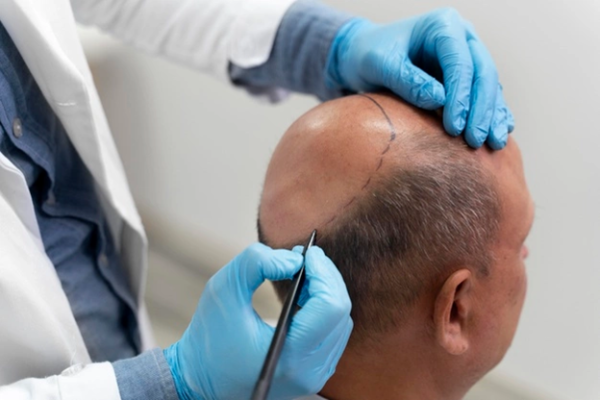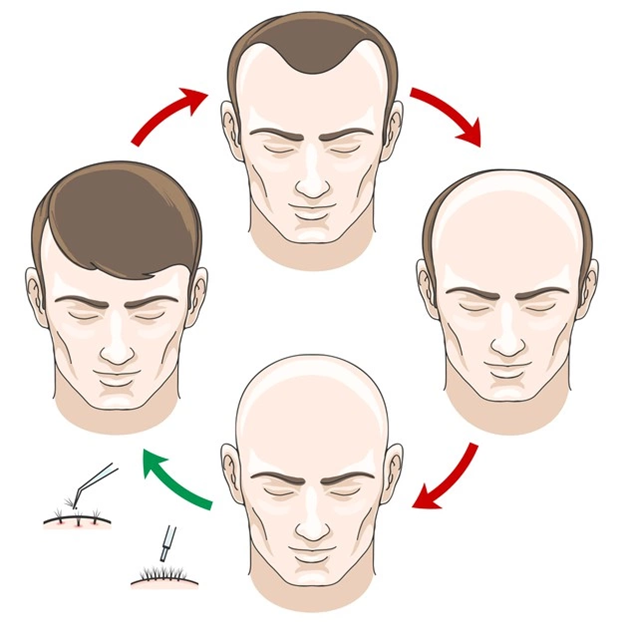
After a hair transplant, what can you do?
Hair transplants are becoming increasingly popular and common. Many people struggle with thinning hair for a variety of reasons.
“Thinning hair can affect someone’s self-esteem, whether it’s caused by age or other underlying conditions. Hair transplants are performed for cosmetic reasons by some people, which is perfectly acceptable,” says Dr. Ankur Singhal, who has among the leading hair transplant centers in India.
Regrow Hair Clinic’s Medical Director, Dr. Ankur Singhal, specializes in two advanced cosmetic and hair transplant procedures FUE and Dense Hair Implantation.
There are some effective treatments for hair loss, but nothing beats hair transplants for speed and effectiveness.
The procedure can be painless and straightforward with today’s technology. The importance of aftercare, on the other hand, cannot be overstated.
Many plastic surgeons will provide post-surgery instructions, as would a plastic surgeon Singapore, which you should carefully follow. For more information on hair transplants, continue reading.
Procedure for hair transplantation
According to Dr. Ankur Singhal, the expert hair transplant surgeon from India, the most prevalent and requested hair rejuvenation procedures are follicular unit transplantation (FUT) and follicular unit extraction (FUE).
These procedures entail removing healthy specific hair follicles from a donor area on the scalp with thick hair development and transplanting them to bald spots or pattern baldness areas (recipient area).
The specialist will pierce minute cuts within the scalp for natural-looking results and implant the follicular grafts with special consideration and precision.
The grafted skin strip may have a linear scar, but this will be hidden when more hair grows naturally around the area.
Aftercare for hair transplants
After you’ve had your hair transplant surgery, you’ll need to take care of yourself.
“Taking hair from the same scalp and transferring it to another area is one thing. However, because it is still surgery, there will be some side effects, even minimally invasive,” says Dr. Ankur Singhal.
It can take 2 to 3 months for new hair follicles to accept and grow new hair after the transplant fully.
The new hair growth may be uneven at first, but it will eventually fill in. Most patients see their desired results in 10 to 12 months, though this can vary depending on the amount of hair transplanted and the patient.
According to Dr. Ankur Singhal, the excellent hair transplant surgeon, you can only get a full head of newly grown hair if you’re willing to put in the effort for the aftercare.
Do not wash your hair right away.
Let your hair air dry for a few days before washing it. Because your scalp may still be sensitive, use the gentlest strokes possible when washing your hair, especially on the newly grafted areas.
Don’t be alarmed if a few hair strands fall out. This is normal as long as the amount of hair fall is within your normal range.
Use only gentle shampoos and conditioners on your hair.
Shampoos are essential, especially those designed to address specific hair issues such as dandruff and hair loss.
Whenever possible, use organic and gentle shampoos. You could also try baby shampoos, which are specially formulated for sensitive baby skin.
You can still comb your hair if you want to. When brushing out tangles, don’t go at it with your usual zeal.
It’s best to use your fingers to untangle the knots. If you need a brush or comb, make gentle strokes rather than pressing them into your scalp.
For long periods, avoid direct sunlight.
Because of the sensitivity of your scalp, exposing it to the sun for an extended period can easily result in sunburn.
That isn’t to say you won’t be able to go to the beach after your procedure. Protective hats can be worn, but make sure they are loose and the right type for your head shape.
Are there any repercussions from a hair transplant?
“Although hair transplant is a minimally invasive cosmetic procedure, it can still have unfavorable side effects if the patient is not informed,” says Dr. Ankur Singhal.
Because the procedure may cause pain, your doctor may prescribe over-the-counter pain relievers. Swelling is to be expected not only around the grafted area but also across your entire scalp.
Itching is also a possibility. When this happens, keep your fingernails away from your scalp to avoid irritating it and causing bleeding or broken skin.
These are fairly common and expected side effects, and they should subside in a week or so. If they persist, make an appointment with your surgeon for a checkup.
When wearing a headpiece, what precautions should be taken?
Patients who have had hair transplants are usually advised to wait for a minimum of ten days before wearing headpieces such as hats, headbands, hoodies, and other accessories.
Consult your doctor first if you want to wear one. The consensus is that a loose, easily adjustable cap can be worn, but this depends on the type of hat.
To allow your scalp to breathe, don’t wear it for more than 6 hours at a time.
You can also change your wardrobe to avoid coming into contact with your scalp.
Choose button-downs or tops with wide necklines so you can easily slip your head in. Remember to take care of your accessories and clothing the way you did when you put them on.
During the healing process, your best words are gentleness and caution.
Featured image link:- https://www.freepik.com/free-photo/man-going-through-follicular-unit-extraction-process_18737148.htm
Featured image credit:- Medical photo created by freepik – www.freepik.com
Content image link:- https://www.freepik.com/free-vector/stages-hair-loss-hair-treatment-hair-transplantation-hair-loss-bald-care-health-haor-human-hair-growth-vector-illustration_11060961.htm
Content image Credit:- Lines vector created by macrovector – www.freepik.com
Author: HealthyLife | Posted on: December 16, 2021
« Will Scalp Micropigmentation Affect the Growth of My Hair? How Personality Types Affect the Chances of Career Success »























Write a comment